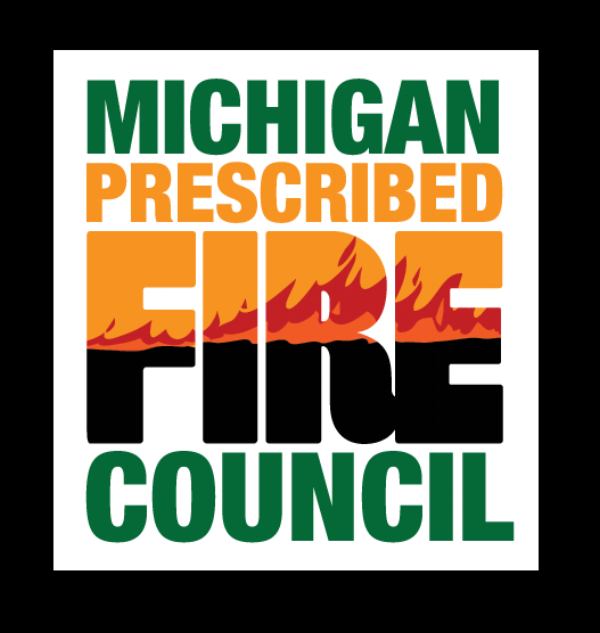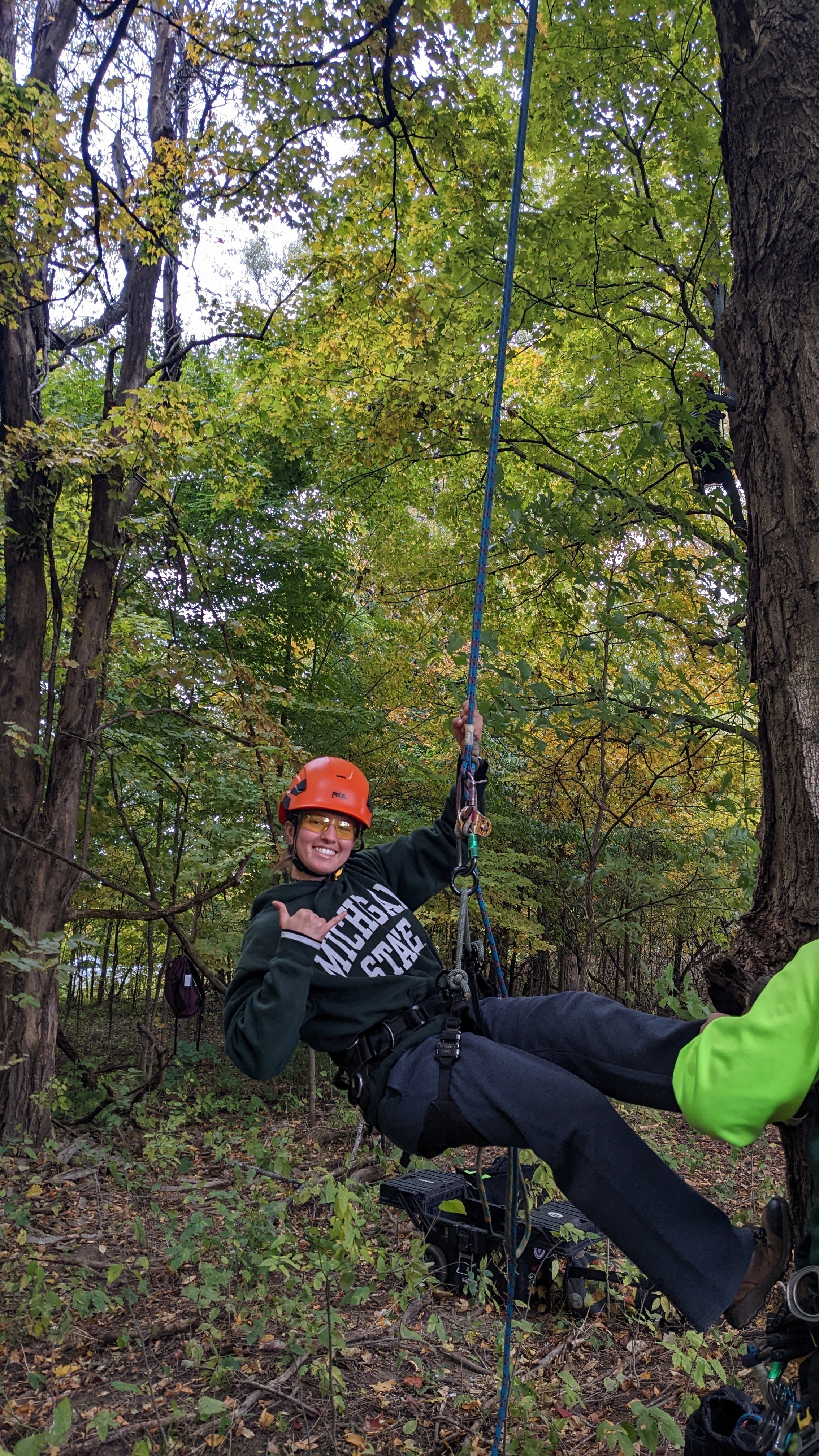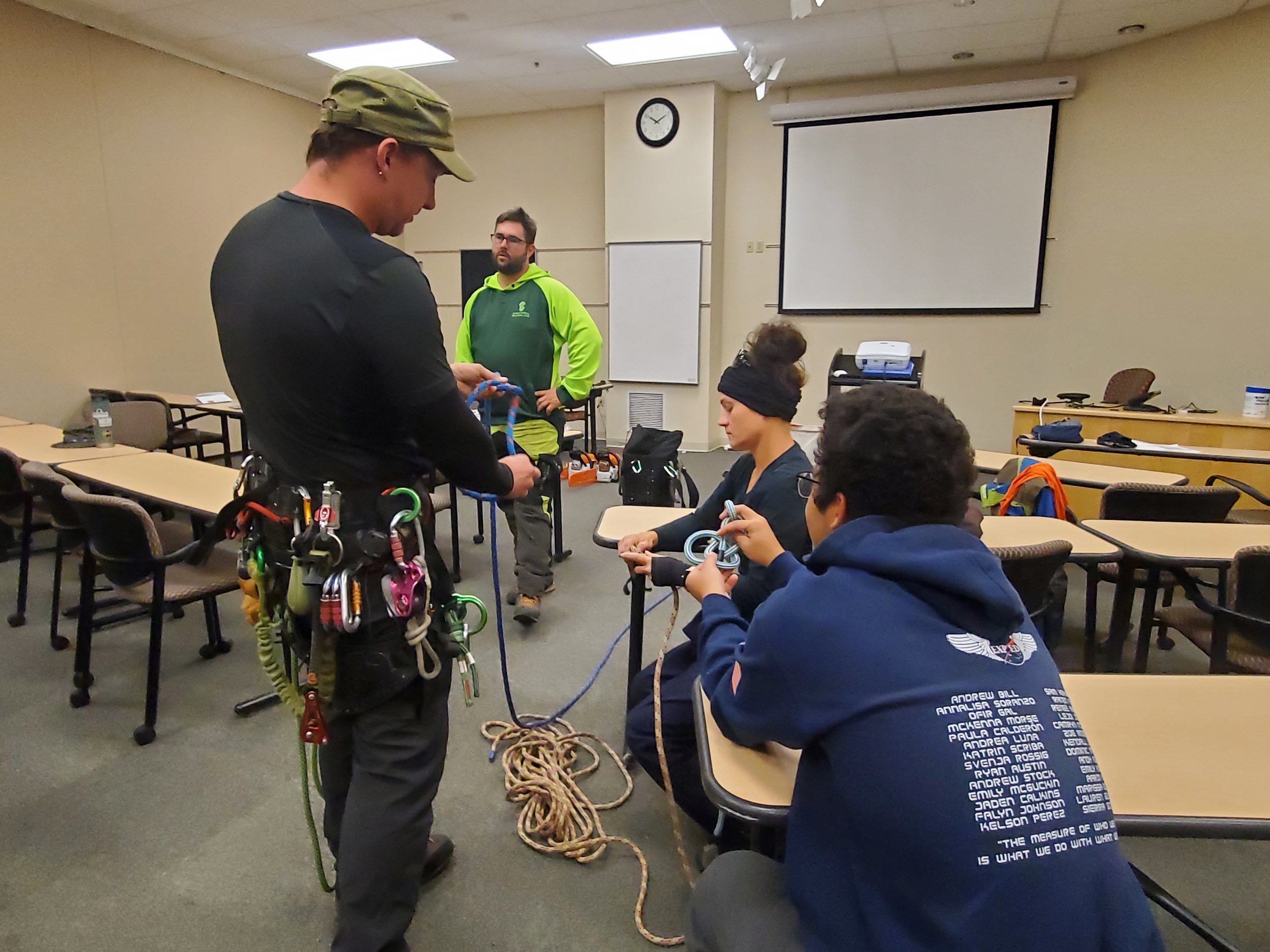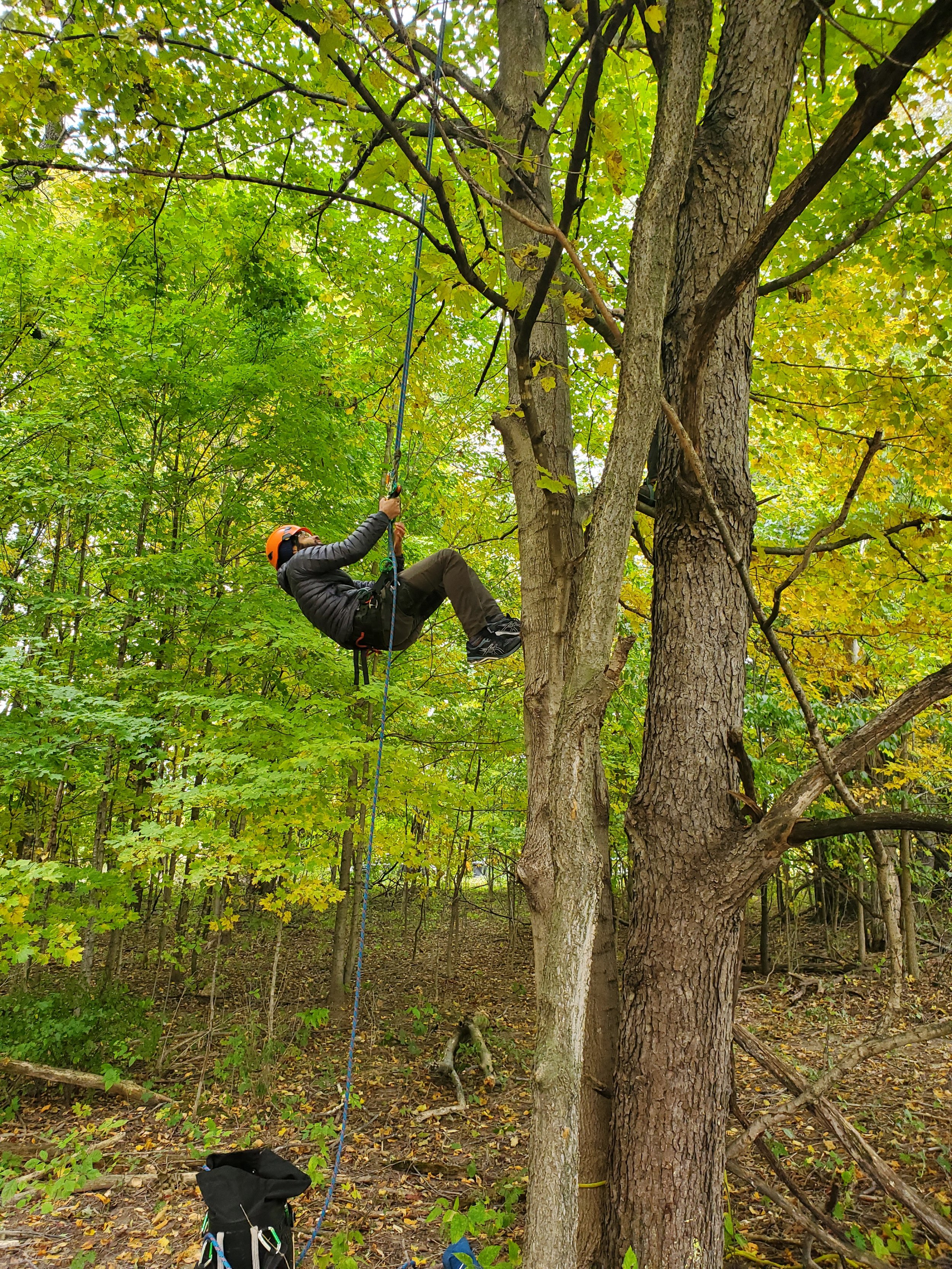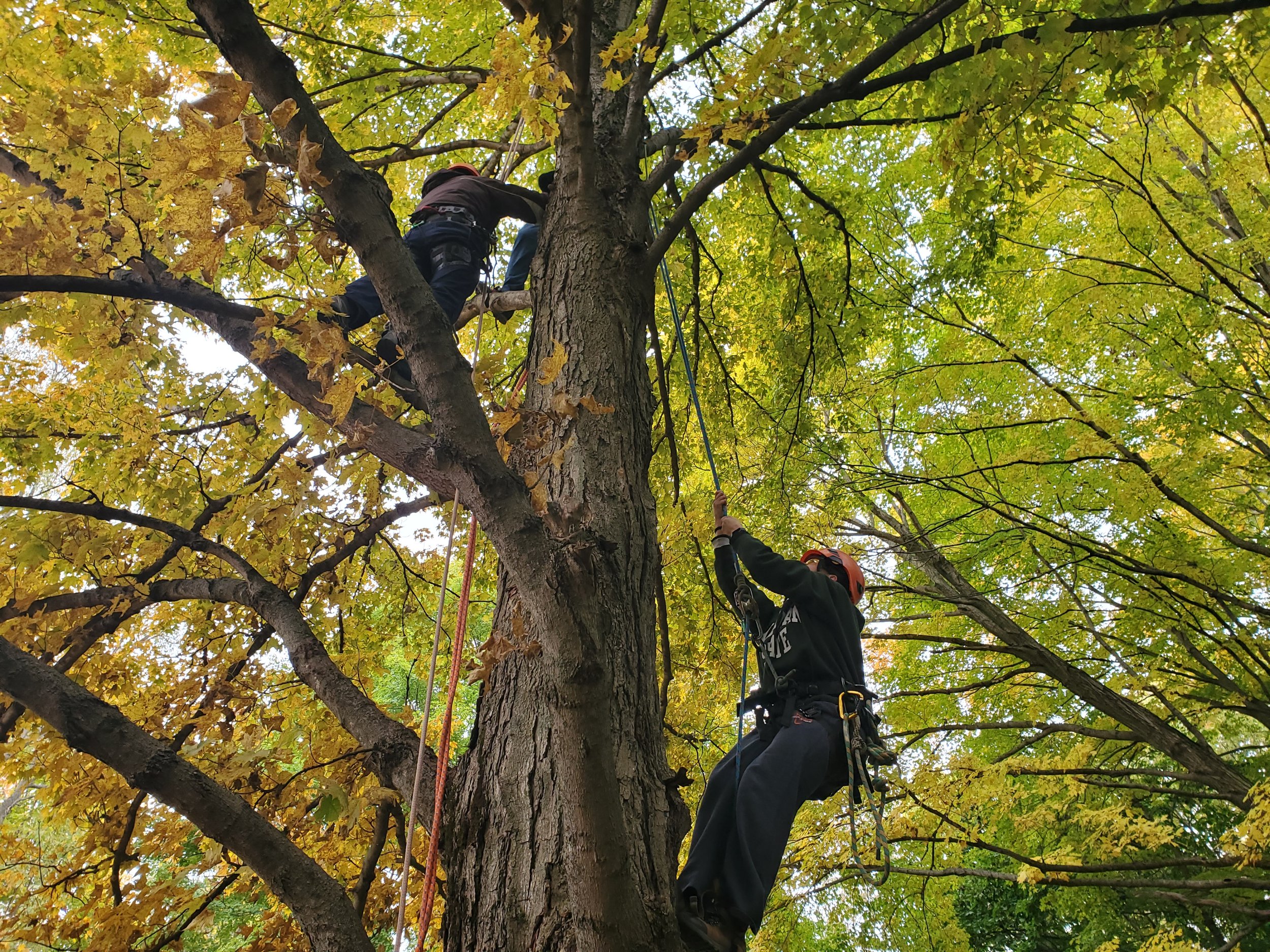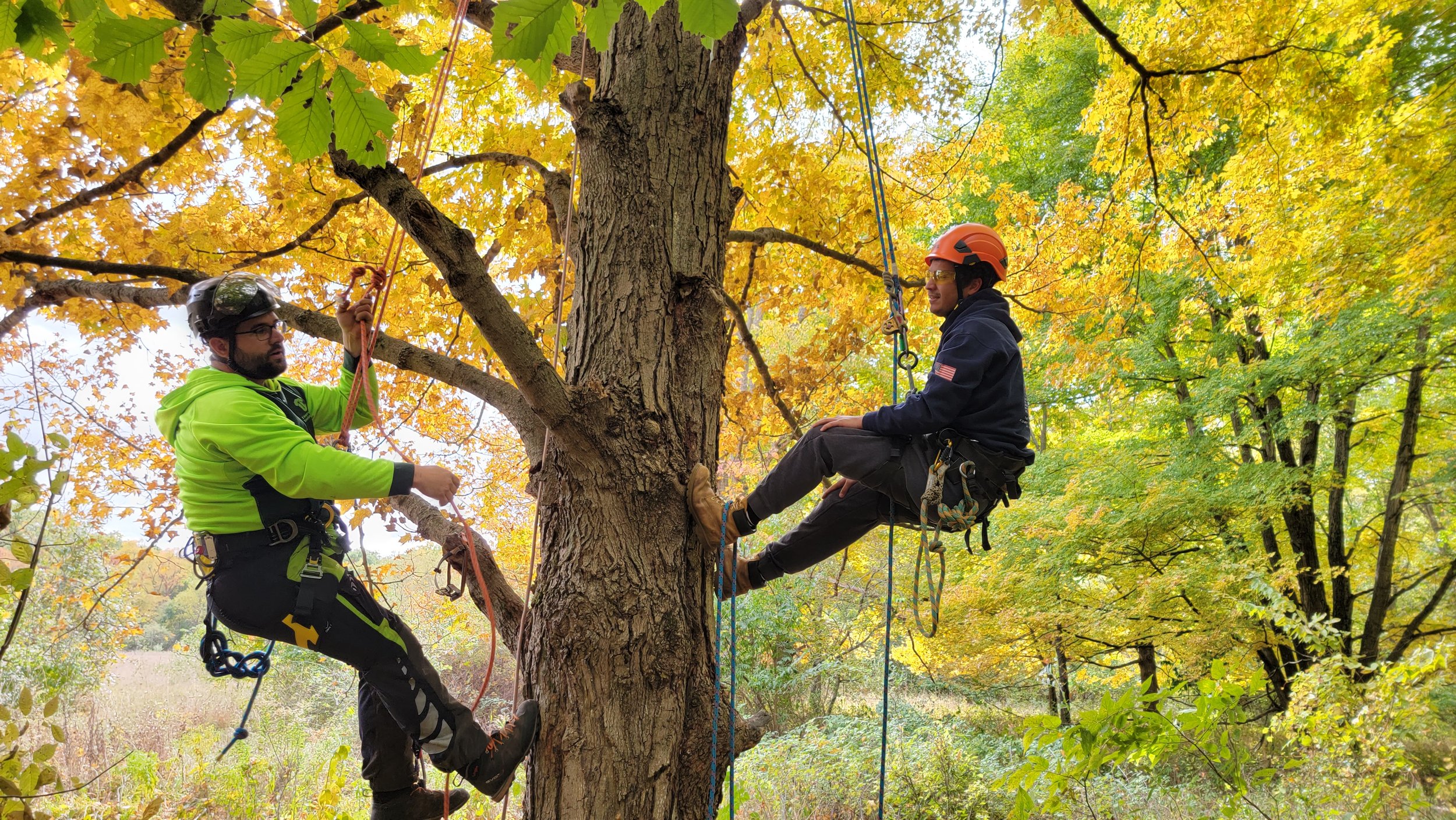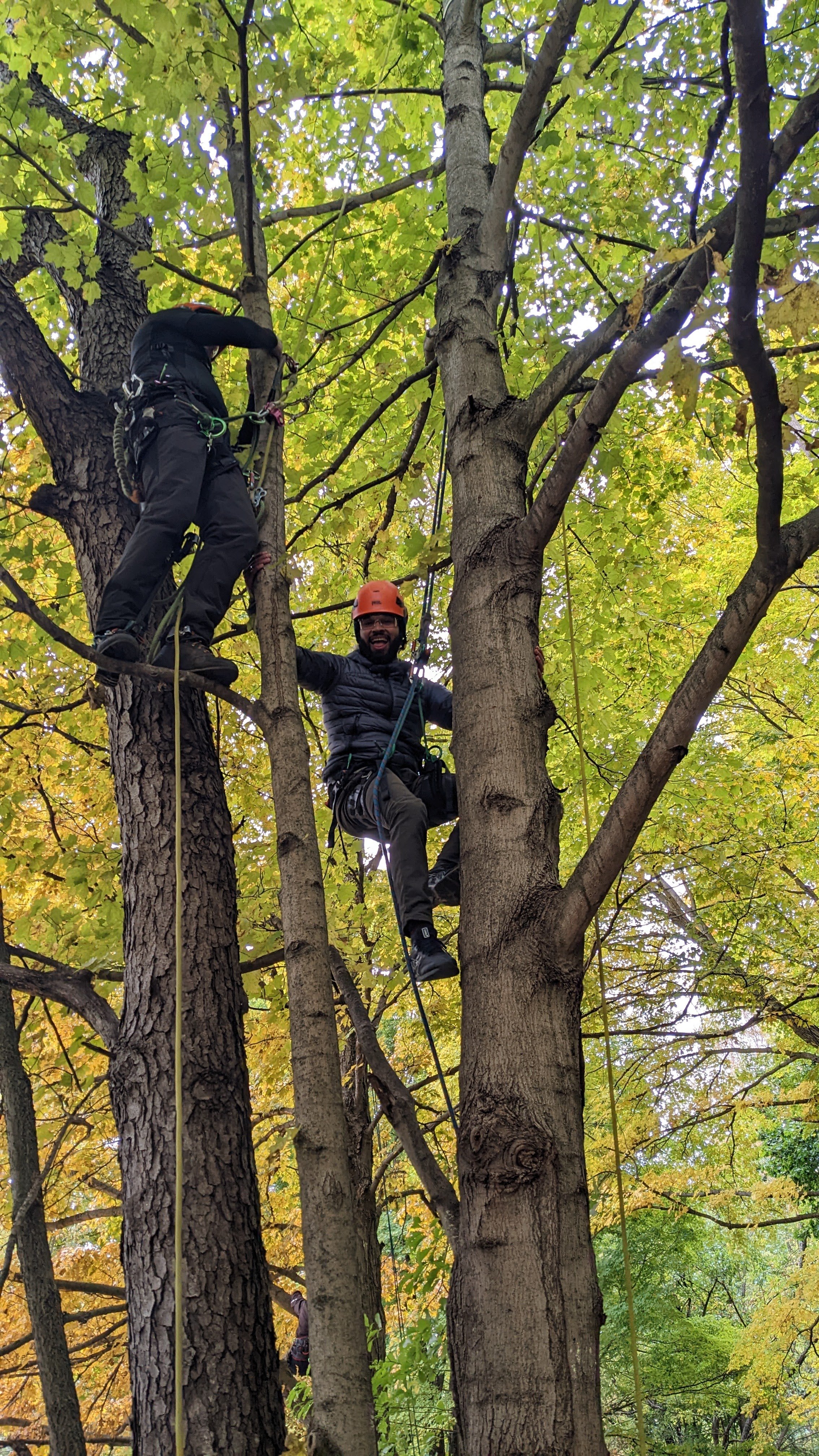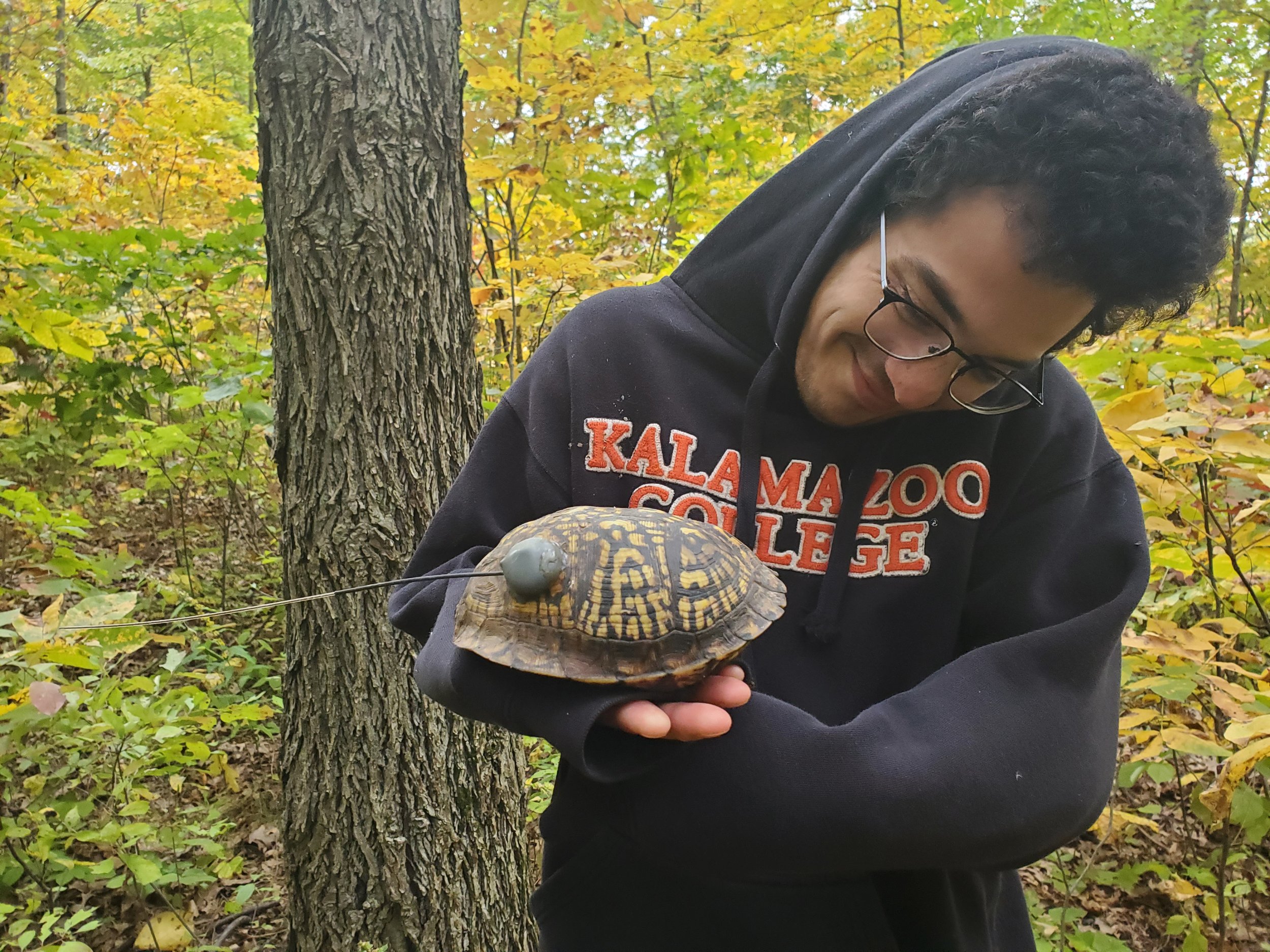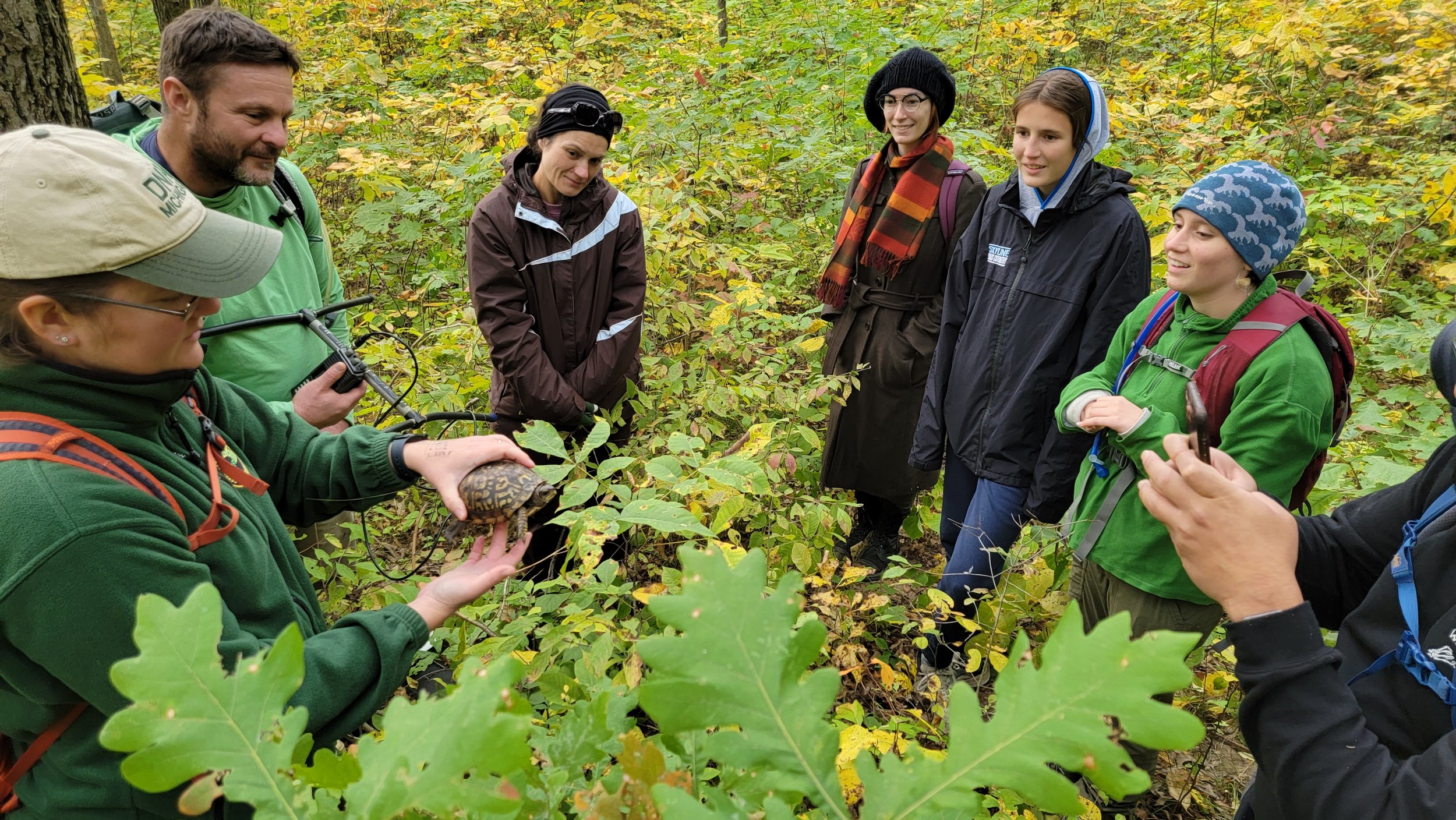Photo of students conducting a prescribed burn by Andrew Vander Yacht
This article is based on interviews with
Dr. Asia Dowtin, Michigan State University Assistant Professor of Urban Forestry,
Dr. Quentin Tyler, Director of Michigan State University Extension and Senior Associate Dean for Outreach and Engagement for College of Agriculture and Natural Resources,
De’Etra Young, Associate Dean for Academics and Land-grant Programs and Associate Professor at Tennessee State University College of Agriculture,
Andrew Vander Yacht, Ph.D., Assistant Professor at State University of New York College of Environmental Science and Forestry,
Bruce Miller, The Nature Conservancy Southern Michigan Prescribed Fire Specialist
Michigan State University, supported by The Nature Conservancy and other partners, was able to start the Urban WildFIRE program with grant funding from the USDA Forest Service Fire and Aviation Management - Workforce Diversity Division. The program was developed by Dr. Asia Dowtin, Dr. Quentin Tyler, De’Etra Young, and Dr. Andrew Vander Yacht for support in the wildfire ecology component.
Urban WildFIRE is a workforce development program designed to provide critical and necessary training to students traditionally underrepresented in STEM, with a specific focus on the recruitment and retention of students from 1890 and 1994 Land-grant Institutions.
The program description explains that “wildland fire professionals throughout the US are heroically dedicated to understanding and addressing the threats posed by increasing wildfire activity, but this workforce (and more broadly, that of the full forest sector) is overwhelmingly white and male. To increase the effectiveness of wildland fire and urban forestry efforts, future generations of such professionals must better represent the communities they serve, which are often characterized by racially and ethnically diverse populations. It is thus imperative that strategic action be taken to provide training through which diverse scholars and future practitioners receive exposure to and training in wildland fire, urban forestry, and natural resources, so as to be given the requisite skills to establish a career in this field.”
Dr. Quentin Tyler further explained the origin of the program and its collaborative approach by saying, "We saw a gap in terms of talent in this particular field and we wanted to do something about it. That involves the minds from multiple institutions from multiple perspectives… We wanted to provide something all encompassing to provide students with a range of skills to succeed in this global society."
Photo of some of the first Urban WildFIRE students by Asia Dowtin
In particular, the program focuses strongly on mentorship—connecting students directly with professionals in the careers they aspire to pursue and developing hands-on skills to become the next-generation workforce. “Mentors provide access, provide guidance, and provide inspiration. Mentors see things in us that we don’t normally see in ourselves,” Dr. Tyler described.
Dr. Asia Dowtin said, “The strength of this program and all successful programs really is making space for collaborative development and implementation for programs and ideas. We have a team that has a diverse skill set, a diverse set of interests and experiences, and yet coming together as a team put us in a position to really highlight and make the most of everyone’s respective areas of expertise. That put us in a position to really be of interest for students who do also have diverse areas of expertise and interest.”
Dr. Andrew Vander Yacht explained, “This program is less about identifying barriers than it is about reducing them. You get all those individuals as a cohort and they have this camaraderie because they’ve all faced it in some way.” The leadership of Urban WildFIRE understands the need to create a place and an environment where diverse students feel included, comfortable, and able to thrive.
One forestry undergraduate at MSU was challenged by a personal crisis while taking classes and questioned their career path. They shared with the professors about how the hands-on training of the Urban WildFIRE course helped them to see a personal future in forestry and gave them space to discuss their dreams and interests.
Kelson, a student from Kalamazoo College, commented, “This program gave me opportunities and training that I do not think I could have received otherwise (unless I was working for a federal agency, maybe). I met so many inspiring people that I have decided to change my direction in life and hopefully start working on some prescribed burns and suppression in the future.”
Another student entered into a job with the US Forest Service that utilizes their GIS skills in mapping areas for prescribed burns.
Photo of students in prairie during wildfire training by Asia Dowtin
The first class of the program was comprised of eleven students representing a variety of communities and backgrounds historically under-represented in current fire careers. They took a three-week online course in the summer of 2021 and then had monthly interactive sessions during the academic year. Due to pandemic challenges, the in-person training had to be pushed back until the fall of 2022. In October 2022, six of the students were able to travel to Michigan for two days of hands-on learning.
Dr. Vander Yacht commented, “They really got to know each other online. Yes, it was virtual, but not only were they learning together and going through these activities but then there were also deep discussions about race and gender and society and how we navigate some of that.” Vander Yacht emphasized that building trust was a key part of the facilitation of the program so that students could feel free to speak up.
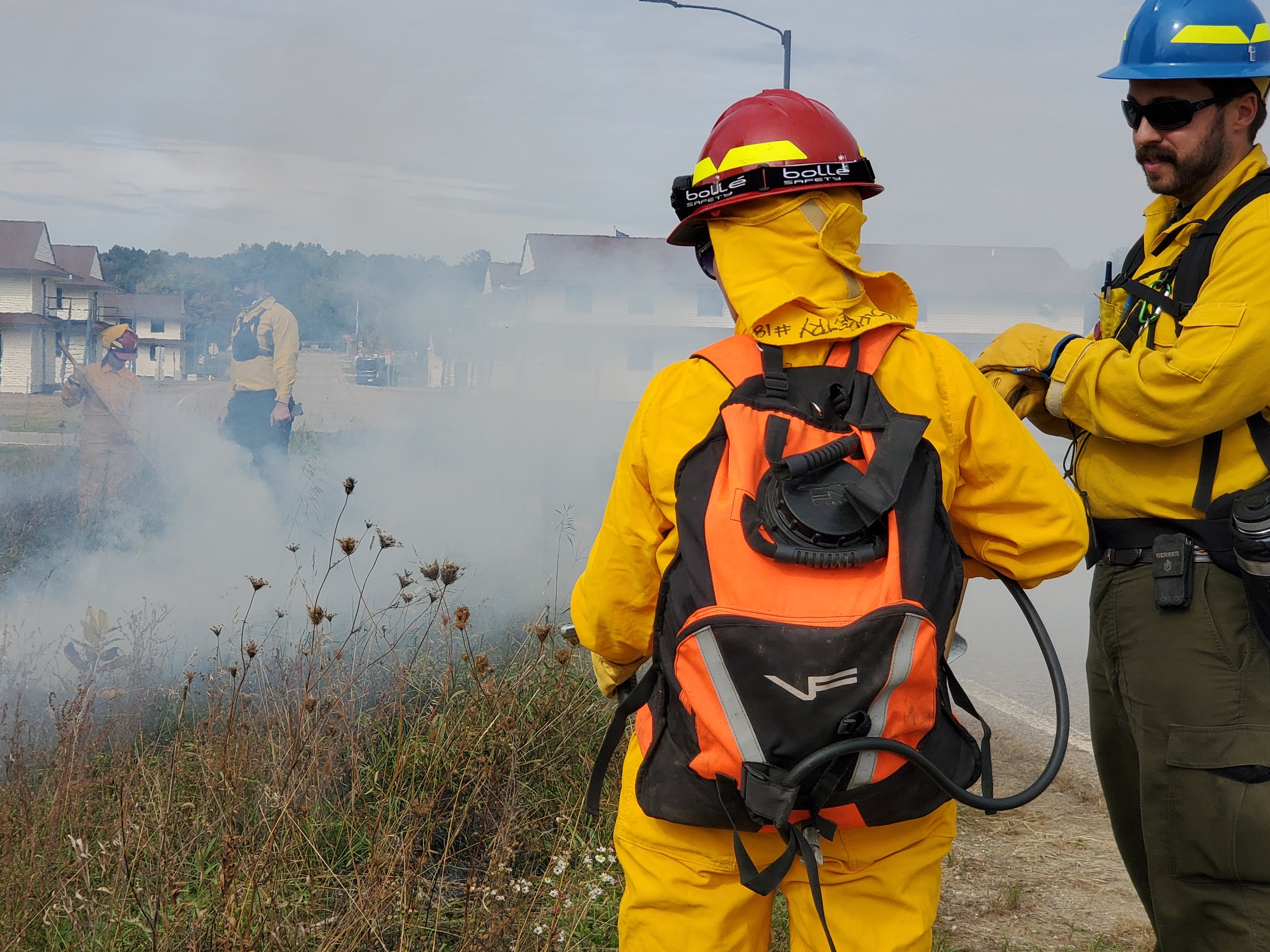

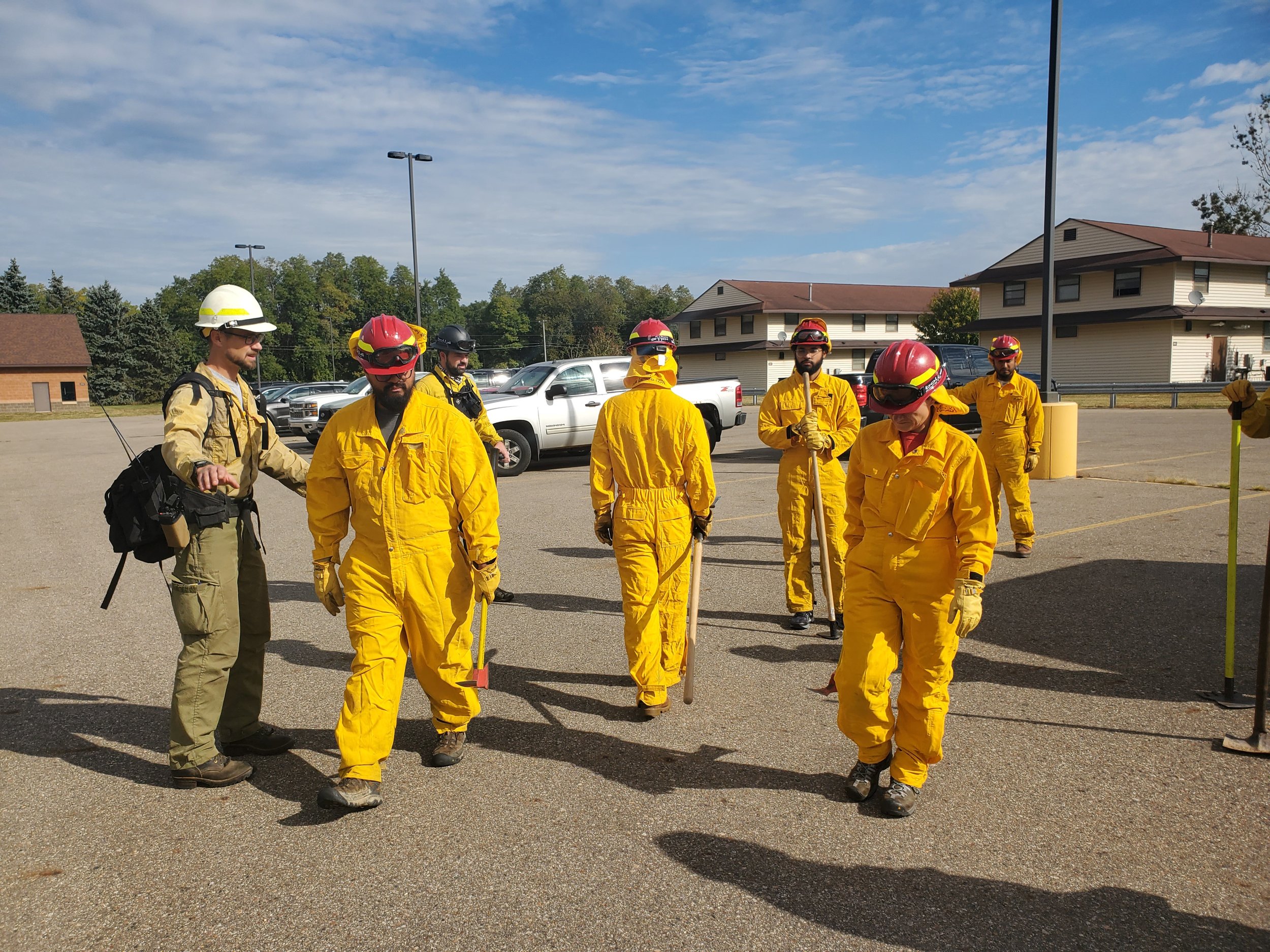
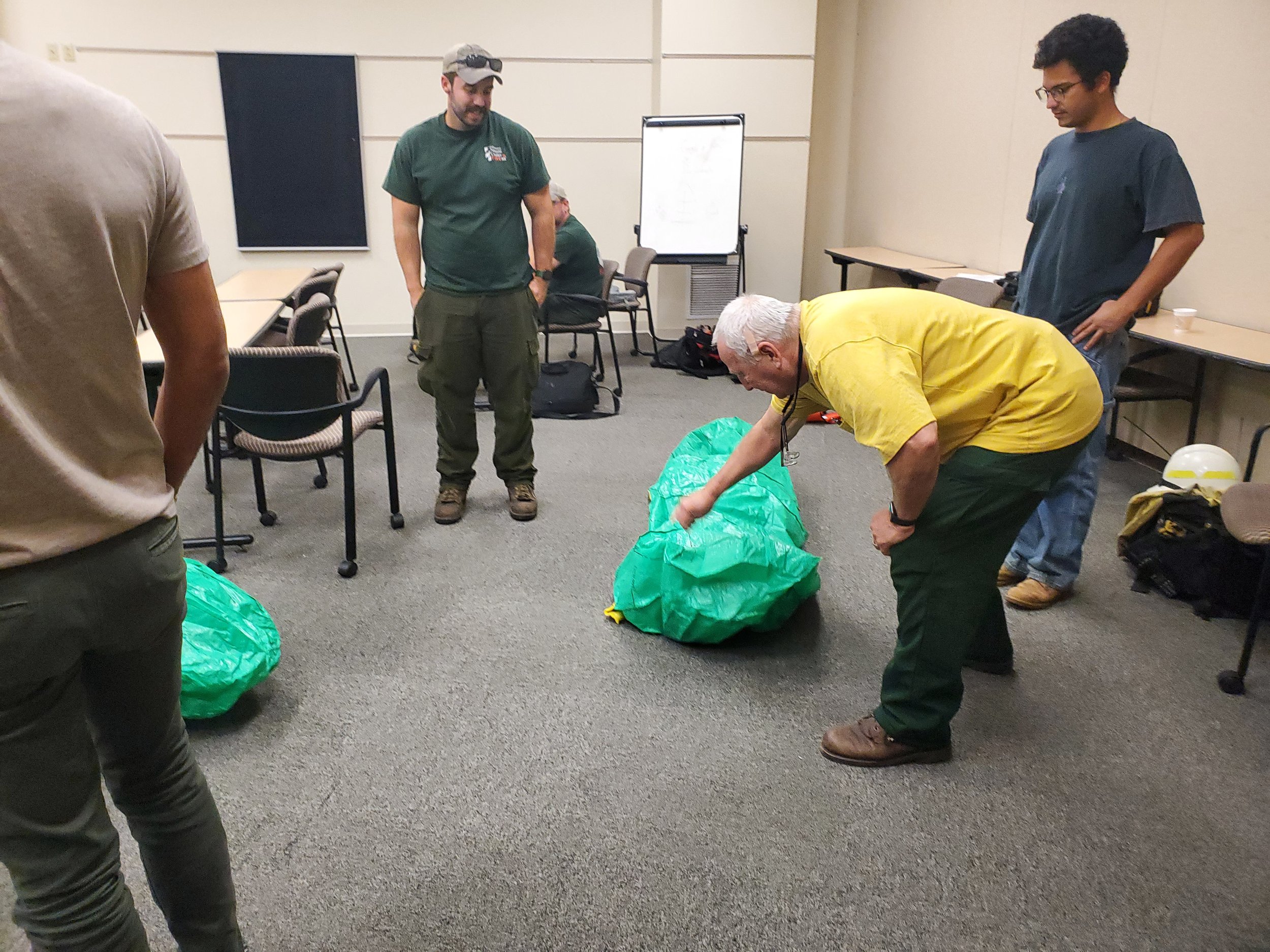
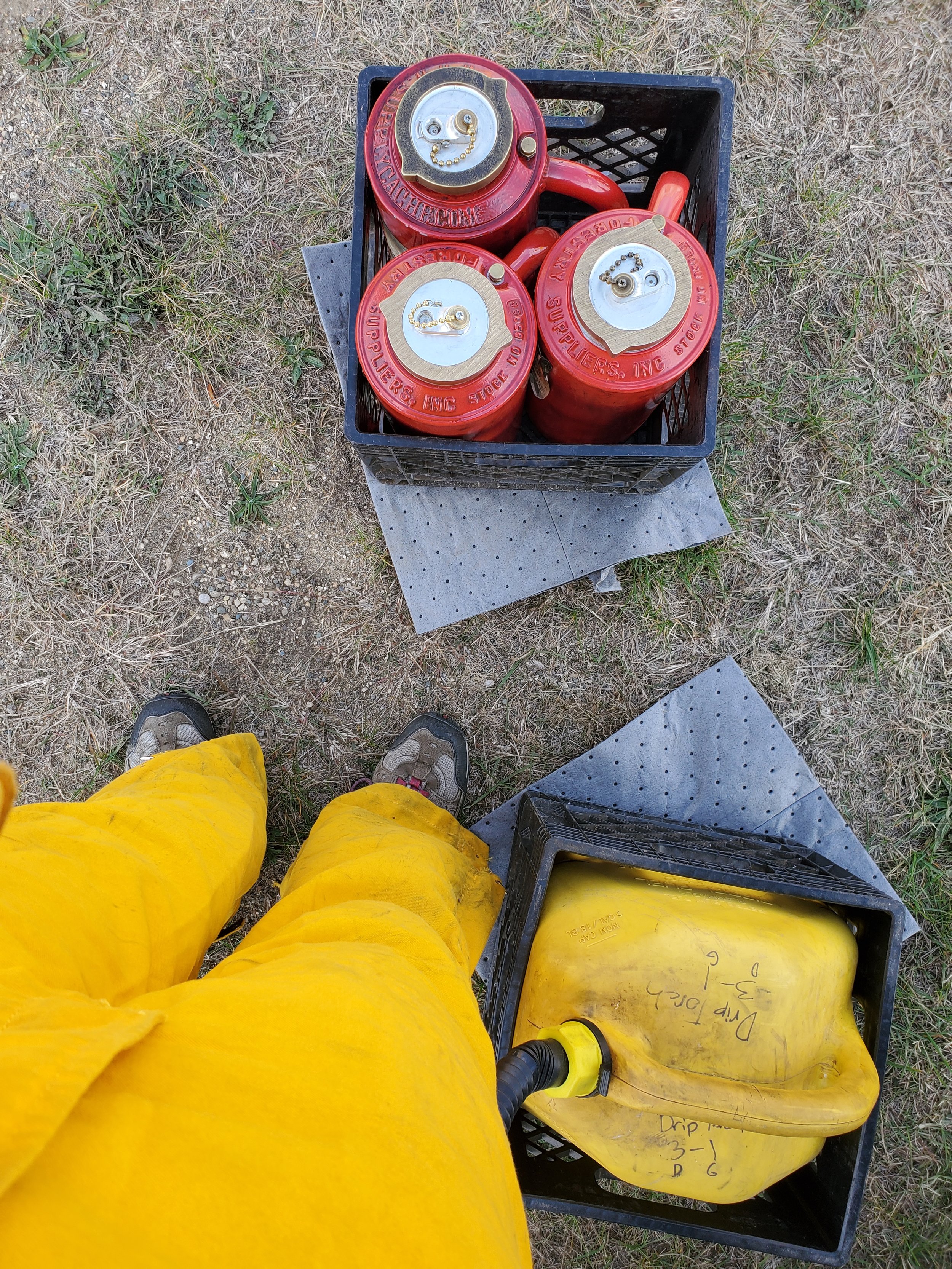
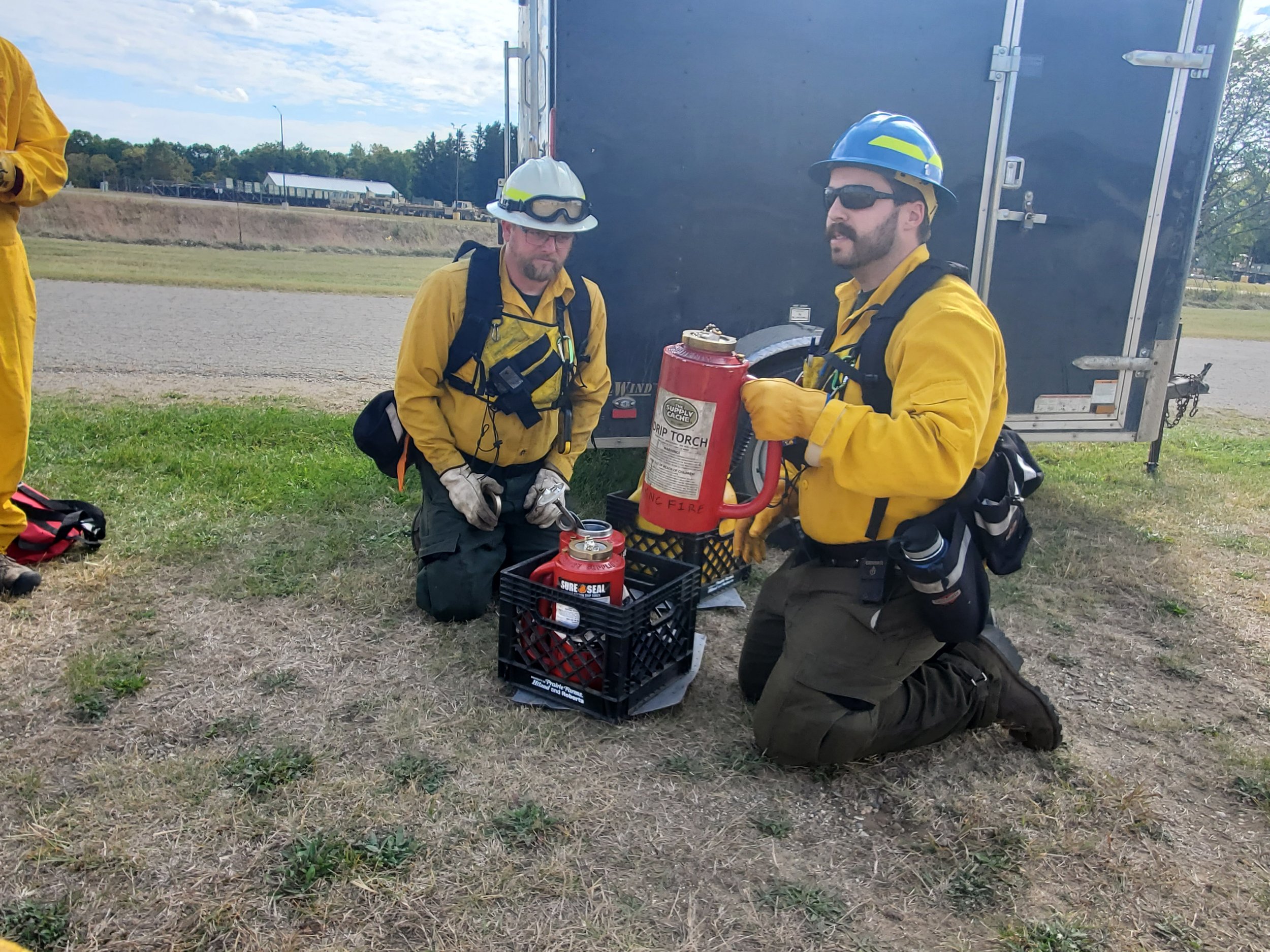
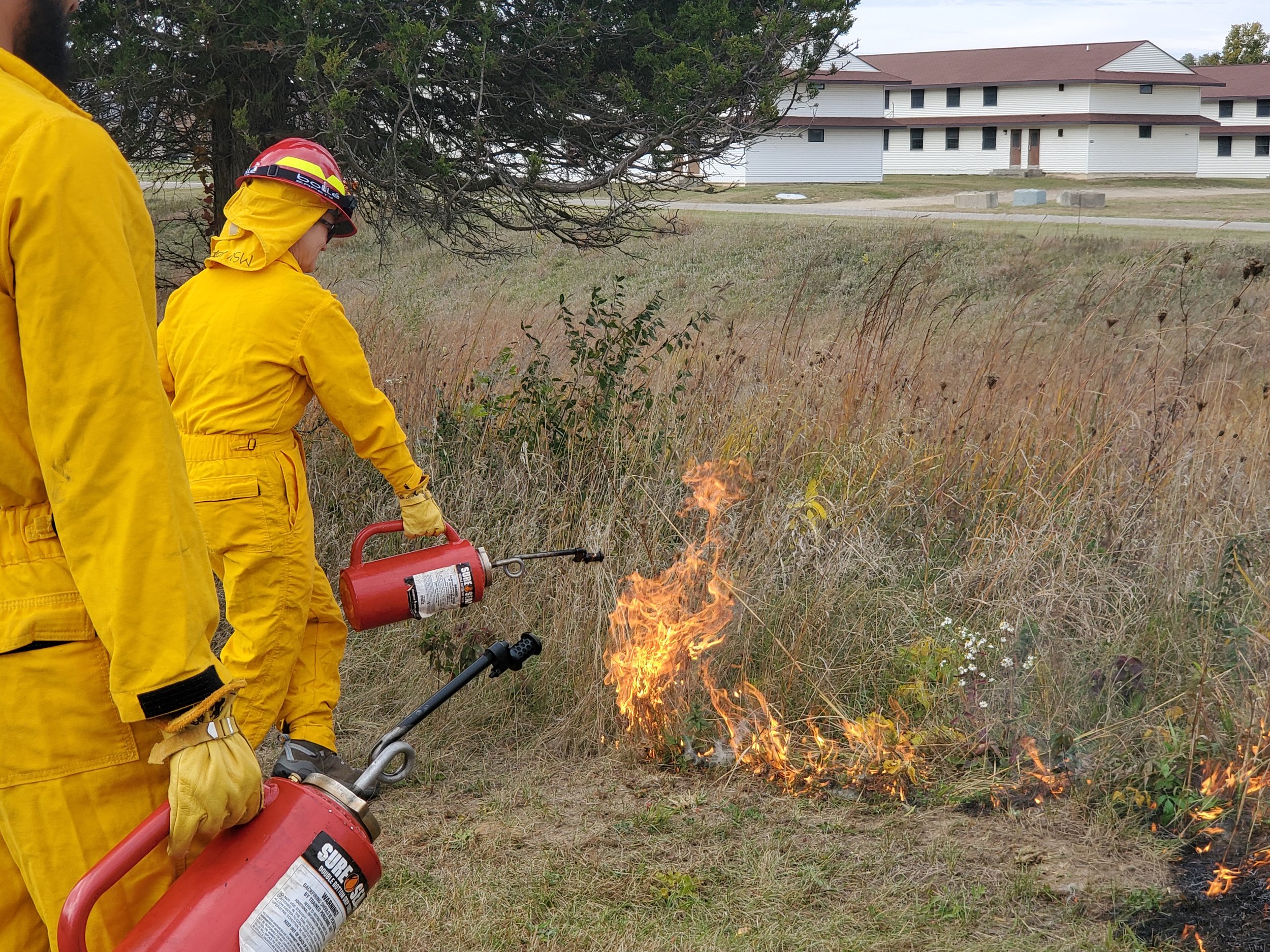
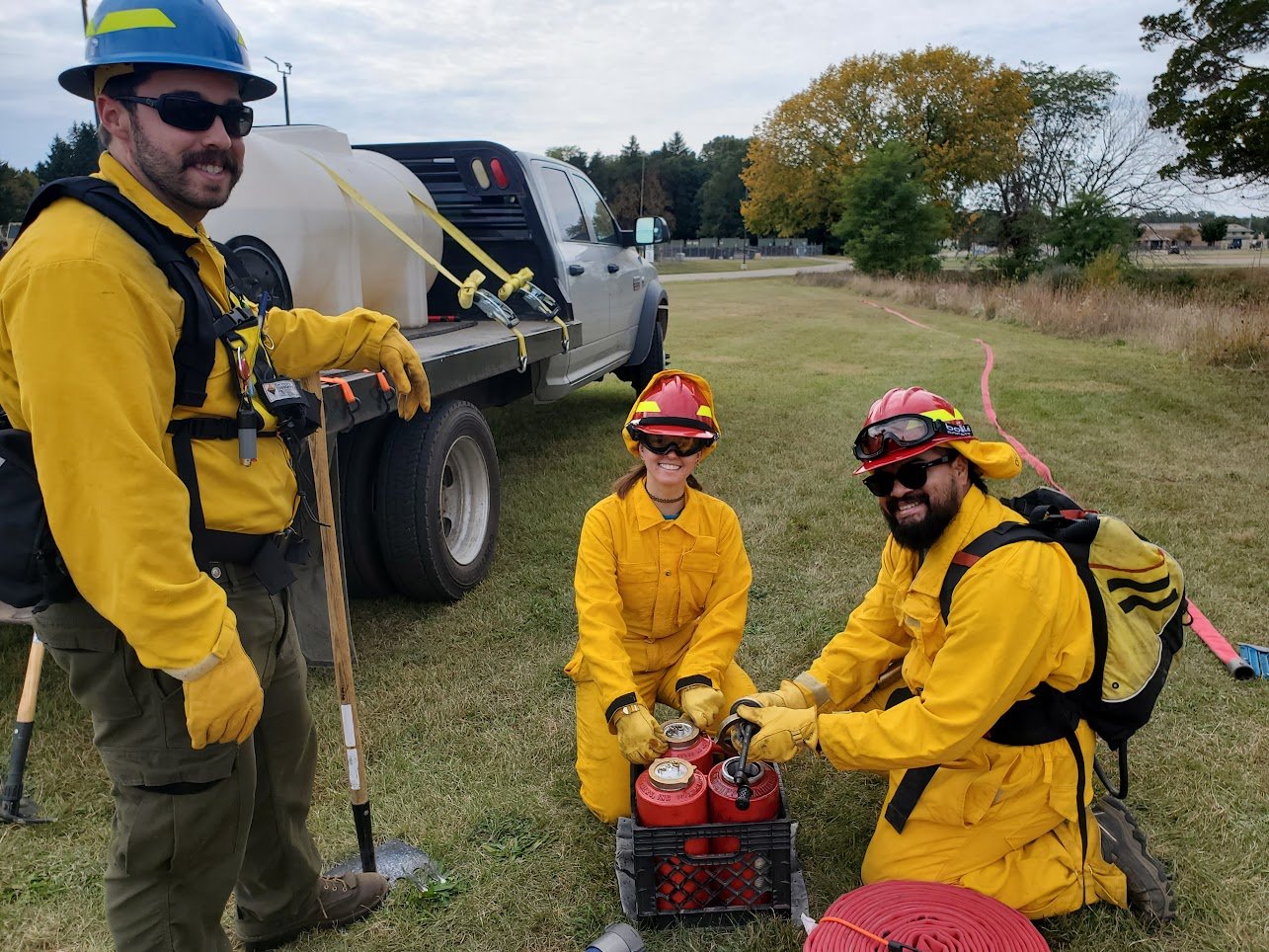
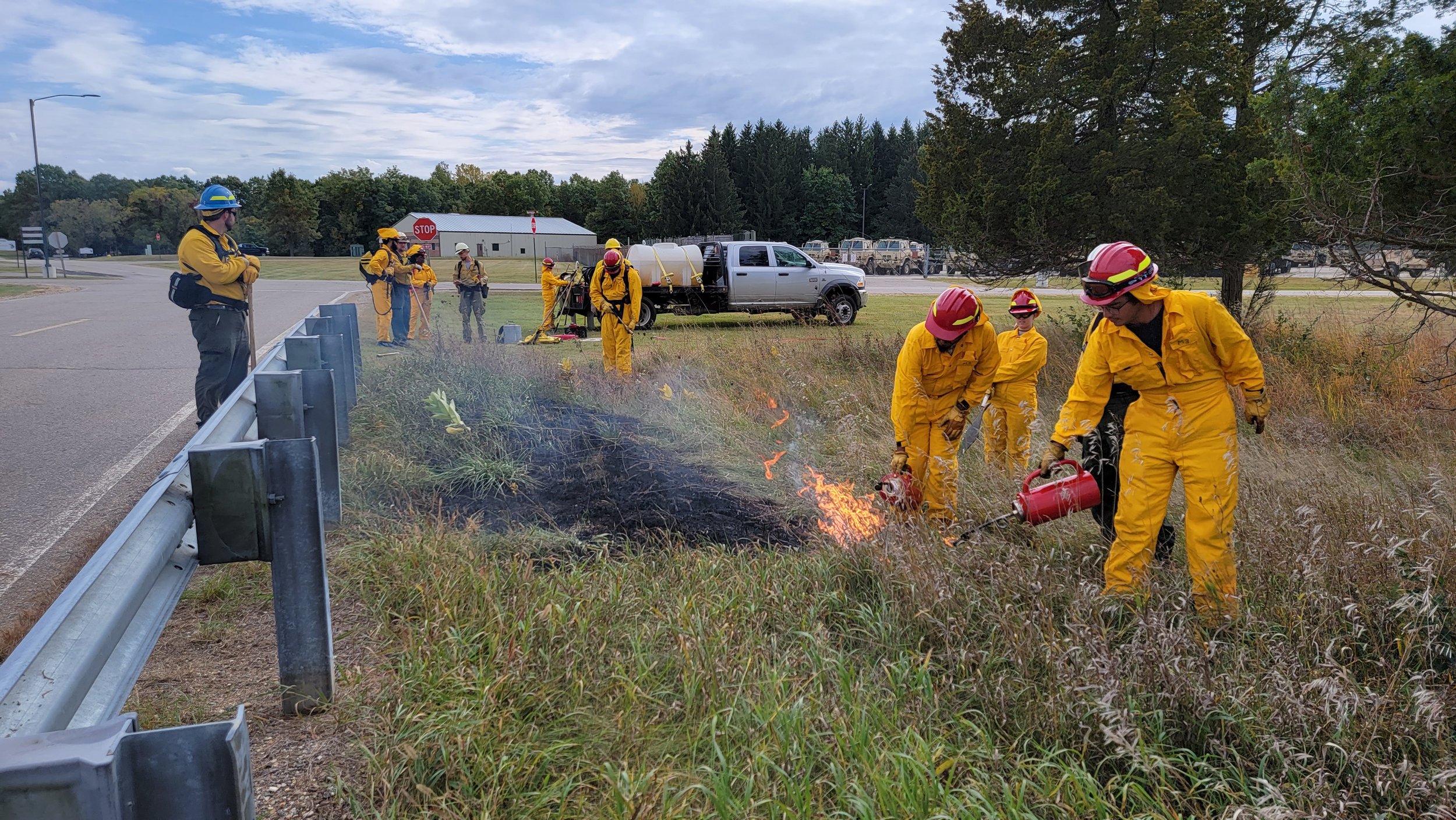
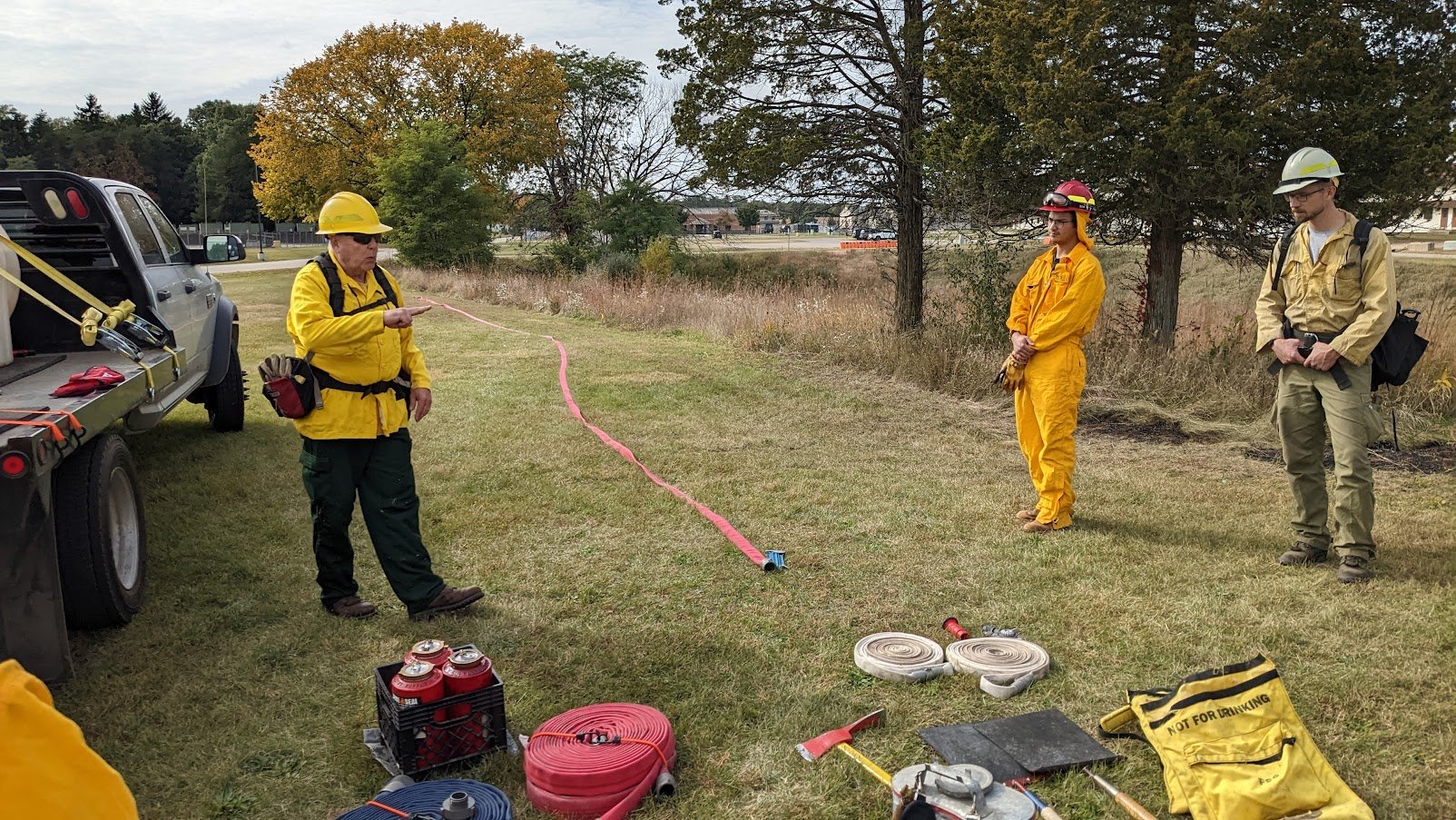
Gallery of photos of students getting experience with wildfire equipment by Asia Dowtin
Bruce Miller (The Nature Conservancy) and a cadre composed of Ben Wagner (Huron-Manistee National Forest), Michele Richards (Michigan Army National Guard), Ryan Koziatek and Kyle Martin (Kalamazoo Nature Center) facilitated field training for the students to obtain their NWCG Basic Wildland Firefighter Certificates. Phillip Seaborn of MSU’s College of Agriculture and Natural Resource’s Office of Diversity Equity and Inclusion presented a DEI workshop about careers in wildland fire. The students received hands-on training with personal protective equipment (PPE), fire equipment, pumps and hoses, and experience with drip torches, hand tools, and water packs.
Bruce Miller reflected on the training saying it was very well-received. “The students were very interactive. When you get those young people who are so interested in learning something new, they come up with some of the greatest questions and scenarios that you have to try to answer. Overall great participation and the cadre did a really good job.”
Photo of students learning about fire-adapted habitats from professionals during field tours by Asia Dowtin
On the second day, Tyler Bassett and Josh Cohen (Michigan Natural Features Inventory) provided interpretation during field tours of the landscapes at Fort Custer Training Center and Southwest Michigan Land Conservancy’s Chipman Preserve. The Urban WildFIRE students were joined by the MSU Fire Ecology and Management students and two high school students from a program run by Josh Cohen.
Arborists Jordan Lynch, Keith Byville, Brian Rathbun, and Charity Barnes, certified through the International Society of Arboriculture (ISA) taught the students the art of climbing trees with ropes and harnesses required to work in canopies.
Photos of students learning tree climbing by Asia Dowtin.
Alicia Ihnken from Michigan DNR showed the students how to use radio telemetry and handle eastern box turtles at the State Recreational Area. Dr. Vander Yacht explained, “We talked about fire management and eastern box turtles – struggles they’ve gone through to get fire on the ground to manage a resource while also having a concern about turtle mortality and injury.”
Photos of students handling eastern box turtles and learning about telemetry by Asia Dowtin
Overall, the students received valuable hands-on training and professional networking opportunities, but furthermore, the class was able to be vulnerable with one another and dive deeper into the barriers and future for natural resource careers. Dr. Asia Dowtin described how a review session of the Tree Equity tool, developed by American Forests, blossomed into a dynamic conversation about where the field of urban forestry is heading and how this course helped students frame their career aspirations and their approach to advancing their careers in urban and community forestry. The program made space for students to feel comfortable sharing their dreams for the future and provided them the theoretical background to discuss matters in the field of forestry authoritatively in this conversation but also in their respective spheres of influence back home.
The Urban WildFIRE program will continue into the future with aims of recruiting 25-30 students for each course. Dr. Dowtin spoke to the long-term impact of this program saying, “In the grand scheme, it sets the stage for an expectation that the people who want to do this work are not solely limited to people who have done this work. There are people of color who are not only interested but they are trained and they are being trained by very well-respected and competitive institutions and are just as qualified to go out and be solid contributors and leaders to this workforce.”
This program is a collaborative effort only made possible by the many organizations involved. If you would like more information on this program or how to get involved, contact Dr. Asia Dowtin at Michigan State University.
Photo of a few Urban WildFIRE students by Asia Dowtin
This article revised 10 July 2023 to include additional interviews from Dr. Asia Dowtin, Dr. Quentin Tyler, and De’Etra Young.
Further Sources:
Terry L. Sharik, Diversifying Student Demographics in Forestry and Related Natural Resources Disciplines, Journal of Forestry, Volume 113, Issue 6, November 2015, Pages 579–580, https://doi.org/10.5849/jof.15-031
Lindsay K. Campbell, Erika S. Svendsen, Michelle L. Johnson, Sophie Plitt, Not by trees alone: Centering community in urban forestry, Landscape and Urban Planning, Volume 224, 2022, 104445, ISSN 0169-2046, https://www.sciencedirect.com/science/article/pii/S0169204622000949
